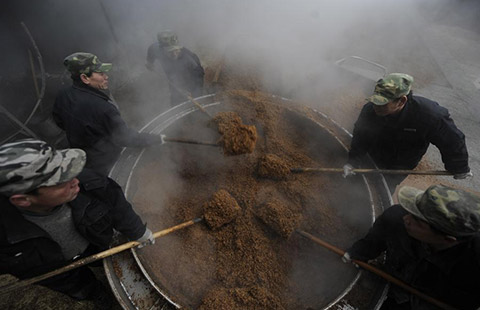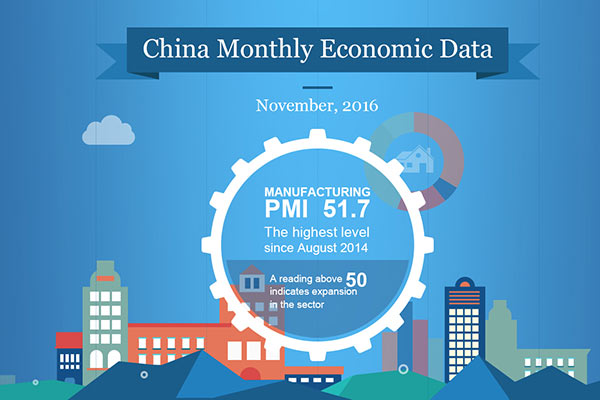China to become world's largest aviation market: Steven Lien
 |
|
Steven Lien, president of Honeywell Aerospace Asia-Pacific. [Photo provided to chinadaily.com.cn] |
China is expected to become the world's largest aviation market in the next 20 years, said Steven Lien, president of Honeywell Aerospace Asia-Pacific, in an exclusive interview with China Daily Website.
As a major provider of aircraft hardware and avionics systems, Honeywell Aerospace has established relationships with some of China's key aviation players.
"According to the 13th Five-Year Plan, about 50 new major airports will be established to accommodate the region's growth in air travel. We estimate that we will see six to seven percent annual growth in passenger traffic, airplane acquisitions and total flying hours in the next two decades," said Lien.
China's Belt and Road Initiative would bring greater opportunities to China, especially in the western region, Lien added.
The following are edited excerpts from the interview:
How do you view China's rapid economic growth and its recent slowdown? Will this affect your business development in the market?
China is expected to become the world's largest aviation market in the next 20 years. According to the State Council of China, China is expected to build more than 500 general aviation airports across the country and own more than 5,000 all-purpose aircrafts by 2020. In addition, China is becoming a key supplier of aircraft and component systems. The government is acting as an avid supporter of this growth, emphasizing the importance of the aerospace industry for the development and growth of the country.
While Honeywell has had a presence in China since 1935, we've seen the most significant changes and growth opportunities in the past decade as the country's demands in the aviation and aerospace industries have increased. This growth is expected in part due to affordable air travel in China, which requires significant investments in new airports and technology.
Overall, Honeywell is dedicated to its employees in China and throughout the APAC region. All of us at Honeywell are proud of our contributions so far, and are committed to continuing our strong local presence to help the industry development in the coming years.
What are your business strategies as you re-adjust to the new Chinese economic realities such as the New Normal?
Under New Normal, we observed that trends such as the emergence of low-cost carriers, increased international routes and demand for new aircraft all point to continued growth. In response, Honeywell has centered itself as a key partner, supplier and innovator for the Chinese aviation industry.
Honeywell has established relationships with some of China's key aviation players, including the Commercial Aircraft Corporation of China (COMAC), Aviation Industry Corporation of China (AVIC) and the Civil Aviation Administration of China (CAAC). With Honeywell's expertise in enhancing flight safety and efficiency, we look forward to continuing to play a fundamental role in advancing air travel in China and around the world.
How do you assess the prospects of your business in China in conjunction with the Chinese market and economy?
Honeywell is proud of our contributions to the thriving Chinese aviation industry over the past several years. Working closely with our world-class customers, partners and vendors, we are involved in many of the country's most critical aviation, aircraft and airport initiatives.
We will continue to support airlines and other operators with maintenance solutions, upgrades and retrofit solutions to make their fleets safer, more efficient and more comfortable.
What do you think of the opportunities and challenges facing your company amid the recent "Belt and Road Initiative" in China? How does your company fit into the national strategy?
Honeywell is well-positioned to support this initiative through its unique China growth strategies —"East for East" and "East to Rest." Under these strategies, we follow the growth, proactively advocating locally developed innovation and partnering with leading Chinese companies to explore opportunities in high-growth regions around the world.
In one specific area, China is predicted to become the world's largest helicopter market over the next 30 years , and Honeywell is prepared to support this via our propulsion, avionics systems, connectivity and service offerings.
China's Belt and Road Initiative will bring greater opportunities to China, especially in the western region, with its rugged topography that's highly suitable for helicopter use. Some of our distinctive technologies, such as the HTS-900 engine, can help overcome the challenges of operating in those environments.
How do you see aviation industry in China in 2017 and the next few years?
The growth of China's aviation industry has been so consistent and robust that people sometimes forget just how far it has come in a relatively short time. China has become a major global player in aviation for the foreseeable future.
For example, expansion is expected to continue in the airline sector, driven by continued rapid growth of the economy and fast urbanization of the population. The government has a strong commitment to supporting aviation infrastructure and new aerospace technology.
According to the 13th Five-Year Plan, about 50 new major airports will be established to accommodate the region's growth in air travel. We estimate that we will see six to seven percent annual growth in passenger traffic, airplane acquisitions and total flying hours in the next two decades.
In addition, we expect to see tremendous growth in helicopter usage across China, already seeing 20 percent growth compared to the number of helicopters in 2015 alone. Demand is being driven largely by the need for helicopters to support missions in law enforcement, emergency medical services and natural resources.
As a result of these favorable projections, we will likely see an increase in aircraft purchased from Western companies such as Boeing and Airbus, as well as from Chinese manufacturers including COMAC, AVIC and others.
Do you have any plans for new investments in China over the next few years?
As a company, we are actively involved in the development of China's aviation industry and provide continuous support for our local team and partners as well as research and development through comprehensive long-term development programs.
As an example, in June of 2016, we signed a Memorandum of Understanding with the Civil Aviation University of China (CAUC), forming a partnership to develop next generation talent for China's growing aviation industry. By working together with top-tier universities like CAUC, we can contribute significantly to the future of China's aviation industry.
We will continue such talent development efforts and keep improving the professional training in the next few years.
In addition, we will continue to look at the capabilities of our current manufacturing, engineering and joint venture facilities with eyes towards expanding their offerings wherever it makes business sense.
Do you plan to add to your R&D efforts in China?
In fact, Honeywell has plans to expand our APAC regional headquarters and research and development facilities in Shanghai's Zhangjiang High-Tech Park. With this new investment in China, we will accommodate continued and consistent business development across the country.
How do you handle hardships and setbacks?
All companies, including us, our customers and partners, face hardships and setbacks. In any of these situations we will first analyze to determine what the real problems and needs are behind those hardships, and then we will seek appropriate solutions to handle them as needed.
As for my role, I oversee the whole process, and work out next steps with my team members, securing resources to help the team deal with the hardships. I believe team work is core to successfully handling the hardships and delivering successful results.
Most importantly, we prioritize each hardship and setback, and after they are handled, we debrief to understand why it occurred, and what we can do to improve the situation next time.























